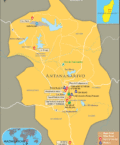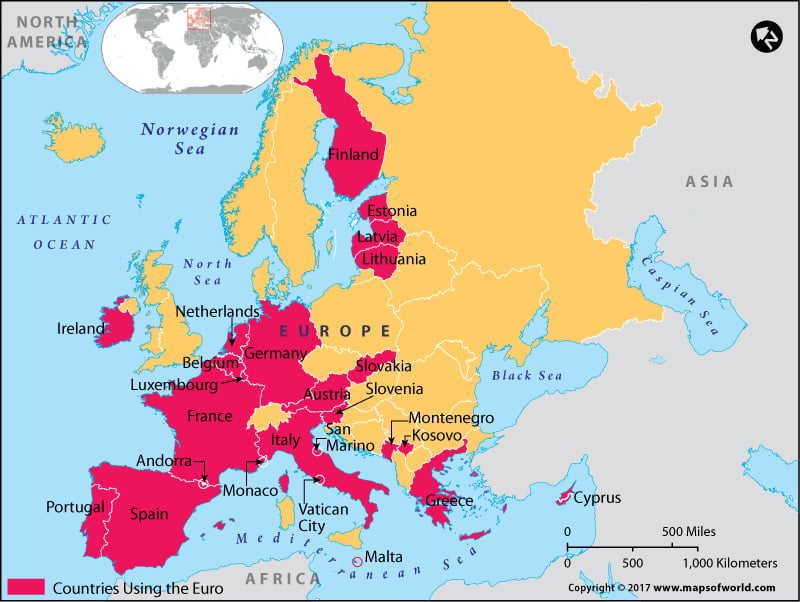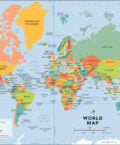Facts about Europe
Quick Facts
Area10,180,000 sq. km.
Population742.5 million (2013)
CountriesAround 47
Major CitiesMoscow, Paris, London, Istanbul, and Madrid
Largest Country by AreaRussia
Largest Country by PopulationRussia
Smallest Country by AreaVatican City
Smallest Country by PopulationVatican City
Largest City by PopulationLondon, U.K.
Highest PointMt. Elbrus (5,642 meters), Caucasus Range, Russia
Lowest PointCaspian Sea (-28 meters), Russia
Major ReligionsCatholicism, Protestantism, and Eastern Orthodox
Major LanguagesGerman, French, English, Italian, Polish Spanish, Romanian, and Dutch
Europe Geography Facts
- The Vatican City is Europe's smallest country by area and population.
- Germany is Europe's largest country by population. Know about the Top 10 largest countries in Europe by population.
- Mt. Elbrus (5,642 meters) in Russia is the highest point in Europe.
- The Caspian Sea bordering Russia is the lowest point in Europe.
- Out of the top 10 largest lakes in Europe, six are in Russia. The biggest is Lake Ladoga. Russia also home to the deepest lake in the world - Lake Baikal.
- Europe's largest and longest river is the Volga that runs through central Russia.
- The Kimmel Falls in Austria are the tallest in Europe.
- Gouffre Mirolda in France is considered the deepest cave in Europe.
- Vatnajokull glacier in Iceland is one of the biggest glaciers in the world.
Continent name: Europe
Story behind the name: It is widely believed that Europe is named after “Europa”, the Phoenician princess from Greek mythology.
Area: Europe has a land area of 10,181,000 square kilometers or 3,837,000 square miles.
Center of Europe: The location of the geographical center of Europe is widely contested, with over 10 cities/villages vying for this honor. Each claimant is right, as far as their methodology of marking the hypothetical center of Europe is concerned. Methodologies and their appropriateness are highly subjective, hence this contest is unlikely to have a clear winner. However, one of the finest “record keepers” of our times—the Guinness Book of World Records—states that the village of Bernotai in Lithuania is the geographic center of Europe. The government of Lithuania has erected a monument to mark the location – 54 degrees, 54 minutes latitude and 25 degrees, 19 minutes longitude.
- Austria
- Belgium
- Cyprus
- Estonia
- Finland
- France
- Germany
- Greece
- Ireland
- Italy
- Luxembourg
- Malta
- Netherlands
- Portugal
- Slovakia
- Slovenia
- Spain
- Montenegro (Not a member state of European Union)
- Andorra (Not a member state of European Union)
- Monaco (Not a member state of European Union)
- San Marino (Not a member state of European Union)
- The Vatican (Not a member state of European Union)
- Kosovo (Status of Kosovo as a country is disputed by Serbia and a few other nations; not a member state of European Union)
- Austria
- Belgium
- Bulgaria
- Cyprus
- Czech Republic
- Denmark
- Estonia
- Finland
- France
- Germany
- Greece
- Hungary
- Ireland
- Italy
- Latvia
- Lithuania
- Luxembourg
- Malta
- Netherlands
- Poland
- Portugal
- Romania
- Slovakia
- Slovenia
- Spain
- Sweden
- United Kingdom
- Albania
- Andorra
- Armenia
- Austria
- Belarus
- Belgium
- Bosnia and Herzegovina
- Bulgaria
- Croatia
- Cyprus
- Czech Republic
- Denmark
- Estonia
- Finland
- France
- Georgia
- Germany
- Greece
- Hungary
- Iceland
- Ireland
- Italy
- Kosovo
- Latvia
- Liechtenstein
- Lithuania
- Luxembourg
- Macedonia
- Malta
- Moldova
- Monaco
- Montenegro
- Netherlands
- Norway
- Poland
- Portugal
- Romania
- Russia
- San Marino
- Serbia
- Slovakia
- Slovenia
- Spain
- Sweden
- Switzerland
- Ukraine
- United Kingdom
- Vatican City
Top 10 cities in Europe (by population):
- Istanbul
- Moscow
- London
- St Petersburg
- Berlin
- Madrid
- Rome
- Kiev
- Paris
- Bucharest
Last Updated on: September 29, 2016




